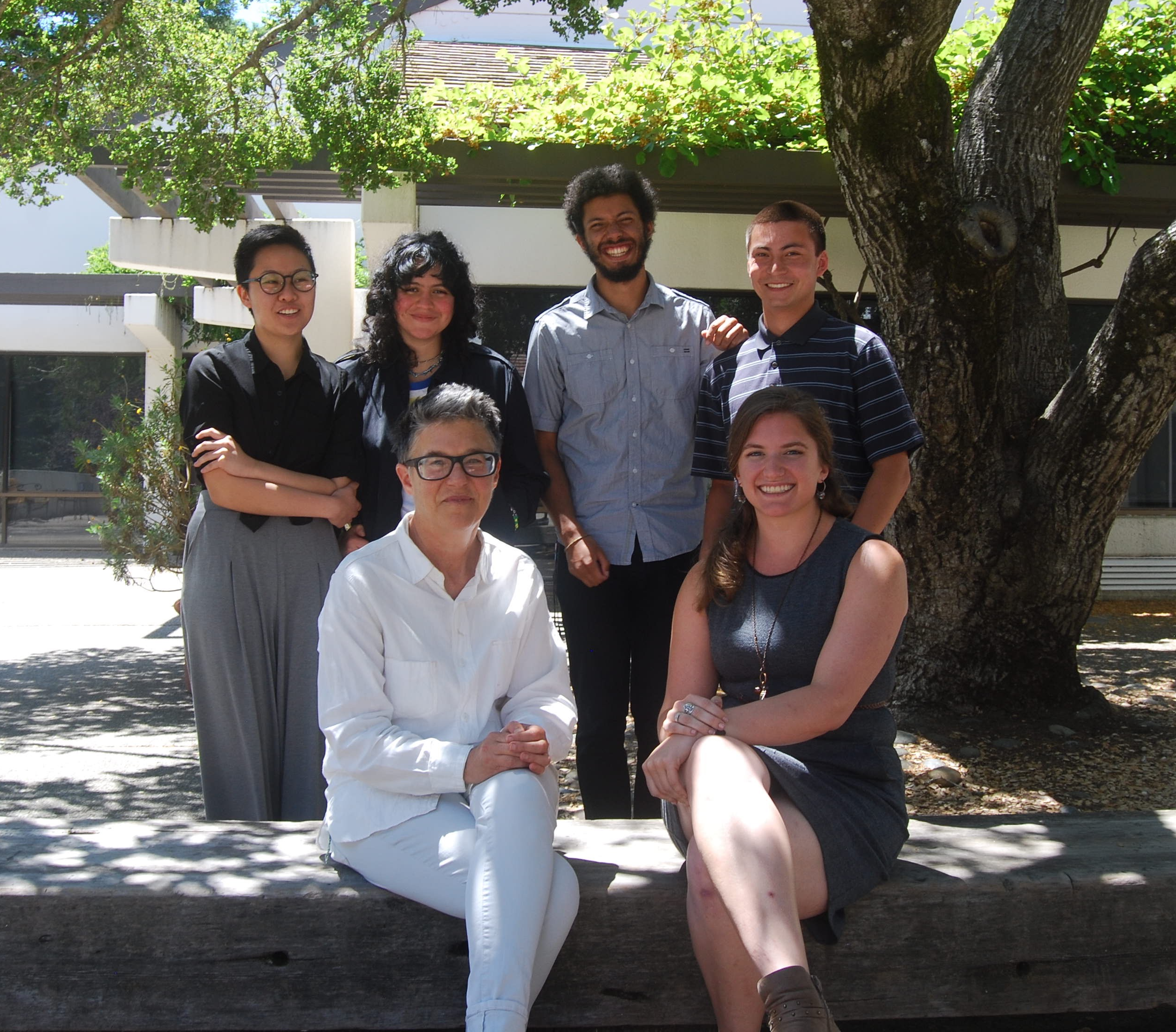On Saturday, the department gathered en masse to celebrate and appreciate the many many contributions of three faculty retiring this year, Sandy Chung, Bill Ladusaw, and Armin Mester. The festivities were chaired by Judith Aissen, who began by assuring the retirees that the Other Side was in many ways better (free parking!) and then oversaw a procession of faculty (Jim McCloskey, Jaye Padgett, and Matt Wagers) and former students (Chris Barker, Vera Gribanova, Louise McNally, and Rachel Walker) whose tributes evoked the wit, the wisdom, and the warmth of the honorees. Between the stories swapped, the pictures shared, and the old friends who joined us to celebrate three remarkable careers, it was an event both joyous and (in Judith’s words) a touch mournful. Thanks go to the organizers, Adrian Brasoveanu, Ashley Hardisty, Junko Ito, and Maria Zimmer for putting together an event at once so spontaneously heartfelt and carefully orchestrated. (Take that, Tonys.)
The vignettes offered–of Armin contemplating the true nature of optimality theory in his in-deck hot tub, of Sandy daring Matt Wagers to just try to run an experiment outside laboratory confines, of the veritable Ars Linguistica Bill has imparted to students across the years (an audience favorite regarding including a bit of formalism in a general talk: It’s good to show a glint of steel beneath the velvet glove.)–vividly reminded the audience of the personalities the department will soon miss. But we will miss much more. The various encomiums heaped upon the three sounded the same themes over and over: a gift for teaching and mentoring; a dedication alongside research to university service; and, above all, a striving for lasting insight beyond the technical, modish, or easy that inspired students and colleagues alike. This last characteristic is the goal every Santa Cruz linguist aspires to, and Armin, Bill, and Sandy have played instrumental roles in imprinting that desire on several generations of scholars.
For their countless contributions to the fields of Phonology, Semantics, and Syntax, to the students who their words and their acts inspired, to the university which owes greatly to their probity and grace, and, ultimately, to the department they called home for three decades (and then some), we thank them.
May the next phase be even better!
